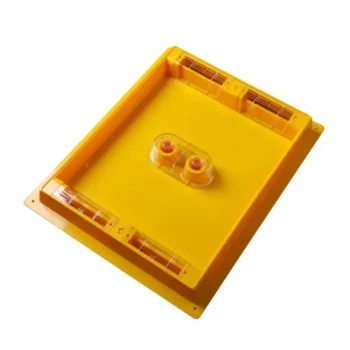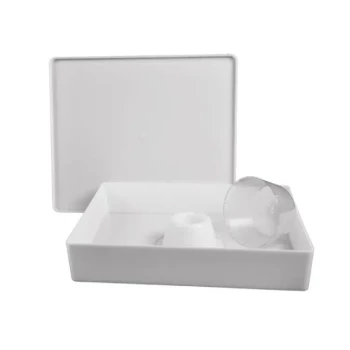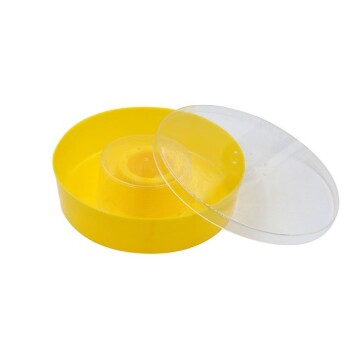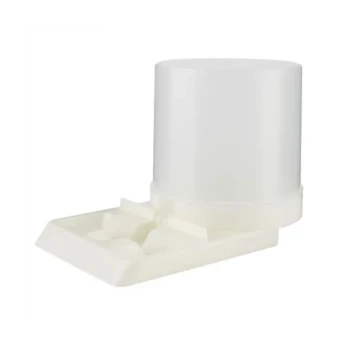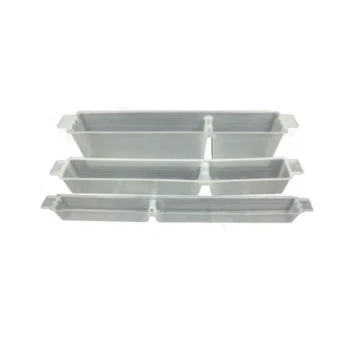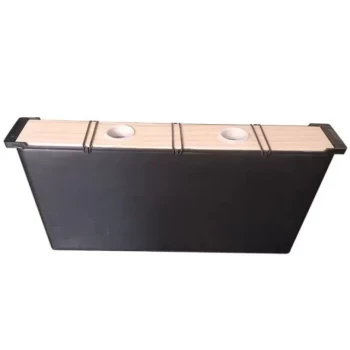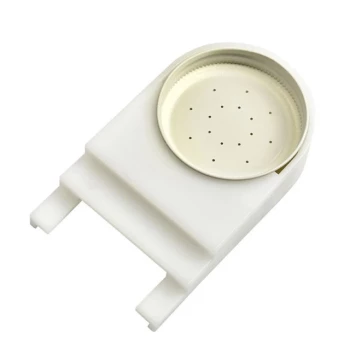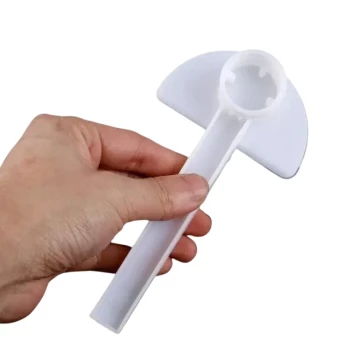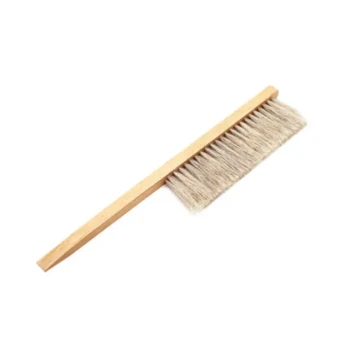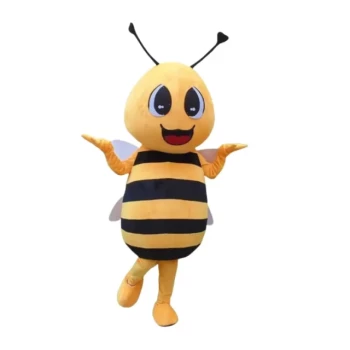To properly use a top feeder, you place it on top of the uppermost hive box, typically resting on an inner cover. An empty hive box is then placed around the feeder to protect it from the elements and enclose the feeding area before the main telescoping top cover is put on. This setup allows you to deliver large quantities of sugar syrup to your bees while minimizing disturbance to the colony.
The core principle of a top feeder is to provide a large, accessible food reservoir above the colony. This is most effective during periods of nectar dearth to prevent starvation and stimulate population growth, but it requires correct placement inside a protective super to be successful.
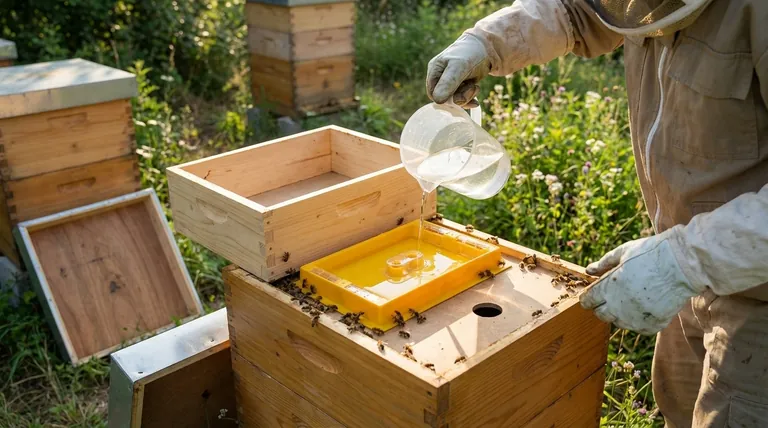
When to Use a Top Feeder
A top feeder is not a permanent fixture. It is a tool used strategically when the colony's natural food sources are insufficient, a condition known as a nectar dearth.
Stimulating Spring Growth
In early spring, a colony needs significant resources to raise new brood and expand. Feeding with a top feeder can provide the energy they need before natural nectar flows begin, leading to a stronger, more populous hive for the main season.
Preventing Summer Starvation
Sometimes, a gap in flowering plants occurs in mid-summer. A top feeder can bridge this nutritional gap, ensuring the colony doesn't consume its winter stores or suffer a population decline.
Ensuring Winter Survival
In the fall, after the final honey harvest, you must ensure the bees have enough food to survive the winter. A top feeder allows you to quickly provide the heavy syrup they need to fill their combs for the long, cold months ahead.
Step-by-Step Installation Guide
Proper installation is simple but critical for the feeder to function correctly and safely.
1. Prepare Your Syrup
Before you open the hive, have your sugar syrup mixed and ready. The ratio of sugar to water will vary depending on the season and your specific goals (e.g., 1:1 for stimulation, 2:1 for winter stores).
2. Access the Hive
Choose a calm, clear day to work. Use your smoker to pacify the bees and gently remove the telescoping top cover.
3. Place the Inner Cover
The inner cover sits directly on top of the highest box containing bees and frames. This piece provides an essential ceiling for the colony and a flat surface for the feeder.
4. Position the Top Feeder
Place the top feeder directly on the inner cover, ensuring the bees can access the syrup through the hole in the inner cover. Most top feeder designs have a central or offset area with a screen or ladders to allow bee access.
5. Add a Protective Box
Place an empty hive body or deep super around the top feeder. This empty box acts as a protective shell, shielding the feeder from weather and containing any foraging bees.
6. Fill the Feeder
Carefully pour the sugar syrup into the reservoir section of the feeder. Avoid splashing or spilling, as this can attract robbing bees from other hives.
7. Close the Hive
Place the telescoping top cover onto the protective empty box. This outer cover is the final layer, protecting the entire hive from rain and sun.
Understanding the Trade-offs
While effective, top feeders are not without their challenges. Understanding the potential downsides is key to using them correctly.
Risk of Drowning
Although most feeders include screens or floats, bees can sometimes find a way to drown in the syrup. You can add extra floats like wine corks or small pieces of wood to provide more landing spots for the bees.
Potential for Robbing
Spilled syrup or a poorly sealed hive can attract bees from neighboring colonies, leading to a "robbing" frenzy that can decimate a weaker hive. Always ensure the top cover fits snugly and clean up any spills immediately.
Distance from the Brood Cluster
In cooler weather, bees may be reluctant to leave the warmth of the central brood cluster to travel up to a top feeder. For smaller or weaker colonies in the cold, an internal feeder placed closer to the bees might be a better option.
Making the Right Choice for Your Goal
Select and use your top feeder based on what your colony needs to accomplish.
- If your primary focus is rapid spring build-up: A top feeder is ideal for delivering large volumes of 1:1 syrup to fuel population growth.
- If your primary focus is preparing for winter: Use a top feeder to quickly provide heavy 2:1 syrup so the colony can maximize its winter food stores.
- If your primary focus is supporting a small or weak colony: Be cautious with top feeders in cool weather and consider an alternative that places food closer to the cluster.
Used correctly, the top feeder is a powerful tool for managing your colony's health and ensuring its survival through challenging times.
Summary Table:
| Aspect | Key Information |
|---|---|
| Primary Use | Strategic feeding during nectar dearth (spring build-up, summer gap, winter prep) |
| Best For | Delivering large volumes of sugar syrup with minimal colony disturbance |
| Key Consideration | Requires an empty super for protection; risk of robbing/drowning if not managed |
| Ideal Syrup Ratio | 1:1 (sugar:water) for stimulation; 2:1 for winter stores |
Ensure your apiary's success with professional-grade equipment from HONESTBEE.
Proper feeding is crucial for colony health and honey production. As a trusted supplier for commercial apiaries and beekeeping equipment distributors, HONESTBEE provides the durable, reliable top feeders and other essential supplies you need to manage your hives effectively. Our wholesale-focused operations are designed to support your business's growth and efficiency.
Contact HONESTBEE today to discuss your equipment needs and secure the tools for a thriving apiary.
Visual Guide
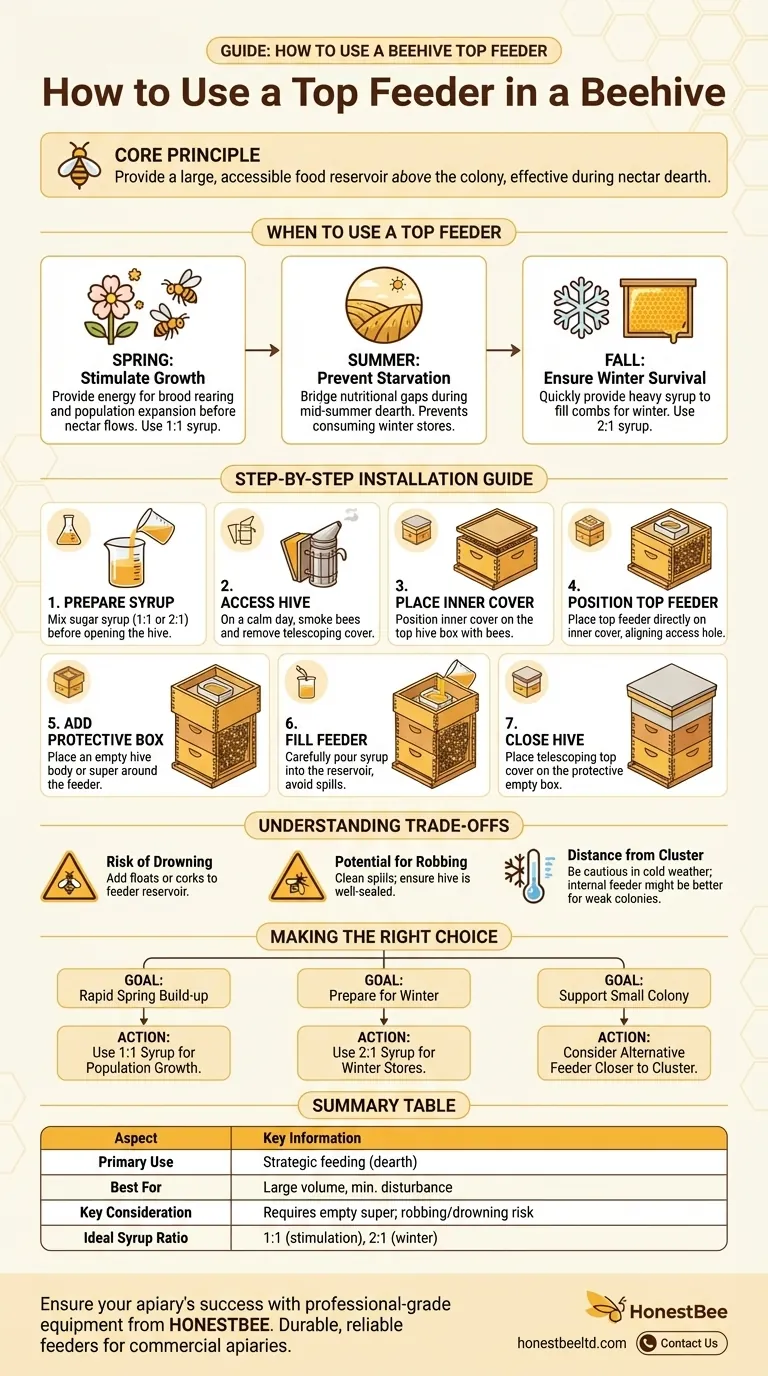
Related Products
- Professional Hive Top Bee Feeder for Beekeeping
- HONESTBEE Professional Hive Top Bee Feeder Feeding Solution
- HONESTBEE Round Hive Top Bee Feeder for Syrup
- Professional Hive Front Entrance Bee Feeder
- HONESTBEE Entrance Bee Feeder Professional Hive Nutrition Solution for Beekeeping
People Also Ask
- What types of hive boxes is the round hive top feeder compatible with? Universal Fit for 8 & 10-Frame Langstroth Hives
- What are the advantages of using top feeders for bees? Maximize Feeding Efficiency & Colony Safety
- What are the advantages of hive top feeders? Maximize Feeding Efficiency for Your Apiary
- Do I need an inner cover with a hive top feeder? Optimize Your Hive Setup for Healthy Bees
- Why is a top feeder essential for bees? Ensure Colony Health and Efficiency
